Post-mortem marriage: Stories of people who decided to marry a dead man
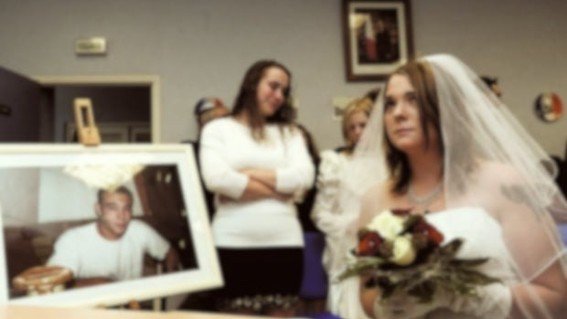
France is the western country that allows its inhabitants to marry a dead person since 1959.
The tragic eruption of the Malpassion Dam, in the French town of Fréjus in December 1959, left hundreds dead. The President of the time, Charles de Gaulle, made a visit to the place to know the dimensions of the tragedy. There he met Irène Jodard, one of the many widows who had resulted from the incident. The young lady came up to the president to greet him and make a disconcerting request: her fiancé had died in the dam and had plans to marry in a few months. He wanted to ask his president for the possibility that the marriage would take place even though his fiancé was dead.
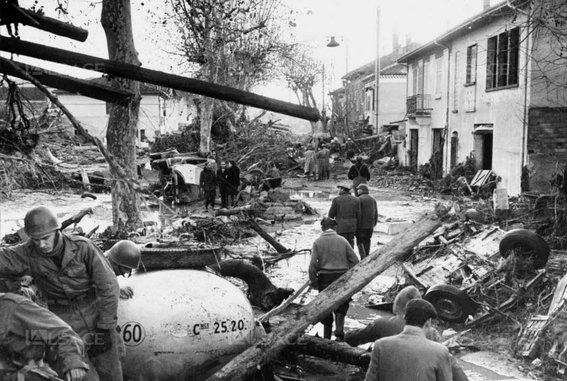
Dam Malpasset
De Gaulle remained silent for a moment and told the young woman that she would think about her request. Months later, on the initiative of the President himself, Parliament met to study the possibility of post-mortem marriage and agreed to formalize the law. Irène Jodard married his fiancé, André Capra, in what was the first marriage of this nature in France and the world.
From this fact, the histories of post-mortem marriage in France (only country in the west which has a regulation in this respect in its Civil code) have been part of its history, dividing opinions between the jurists and their own inhabitants. It is probable that if it had not happened the tragedy that flooded Fréjus (and if Irène Jodard had not loved so much André Capra) today would not speak of this fact that revolutionized the French law and that more than one might seem something sinister and even morbid.
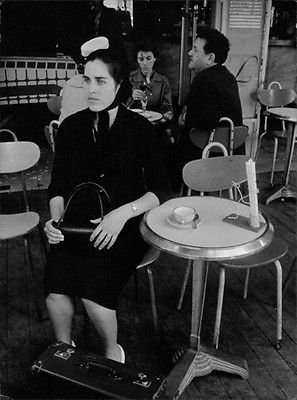
Irène Jodard
One of the most recent and most sound cases of post-mortem marriage occurred in the French village of Dizy-le-Gros, a place that barely round the thousand inhabitants. Young Karen asked the authorities for permission to marry her deceased boyfriend Anthony, who died two years ago in a car accident. French law, by means of article 117 of the Civil code, is capable of allowing a person living and another dead, or even two deceased lives, to marry. We quote a fragment of this law to clarify this point:
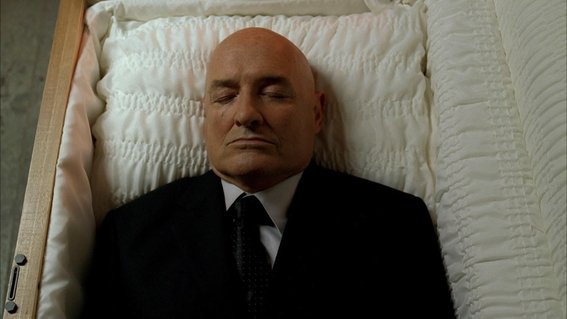
"The President of the Republic may, for serious reasons, authorize the celebration of marriage if one of the future spouses died after completing official formalities which unequivocally indicated his consent. In this case, the effects of marriage are retroactive to the date of the day preceding the death of the spouse. However, such a marriage does not imply any right of succession ab-intested for the benefit of the surviving husband Reputándose also that there was no matrimonial regime between the husbands".
Precisely, the French president of that one then, Nicolas Sarkozy, was who gave its approval for this strange linkage that would not be the only one registered in the Gallic country. In the community of Domary-Baroncourt, nailed in the department of the Meuse, north of France and adjacent with Belgium, in 2009 the marital union was authorized between 26-year-old Magaly Jaskiewicz, and 27-year-old Jonathan George. In this case, the groom was also the one who married being deceased. The wedding attendants saw him through a portrait resting on a chair next to his girlfriend, who listened to the priest's words in front of the altar.
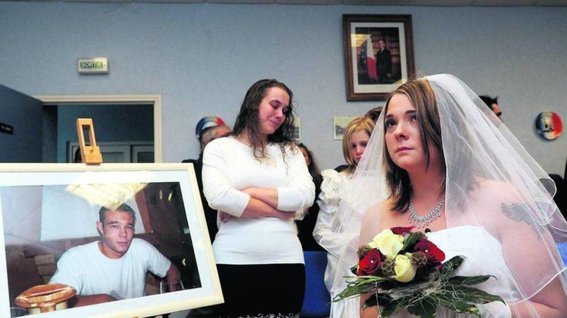
Magaly Jaskiewicz
Jonathan had also died in a traffic accident a year earlier. He and Magaly had been living together in free union for six years and had two daughters: Dorianne 3 years and Kassandra a year and a half. His plans were to marry in January 2009 and for this they had prepared all the legal proceedings before the town hall of Domary-Baroncourt. However, in November 2008 Jonathan died in a tragic way. In France, these petitions are given on an average of 50 a year. Other European countries like Belgium already recognise this judicial option.
These kinds of stories date back many years. In 1980, a young Belgian pregnant woman moved to France to make valid her post-mortem marriage with her fiancé, who died eight days before her marriage bond in another car accident. Taking into account that her future husband was French and that France already validated this type of links, the young woman traveled to the land of her fiancé to formalize the bridal contract.
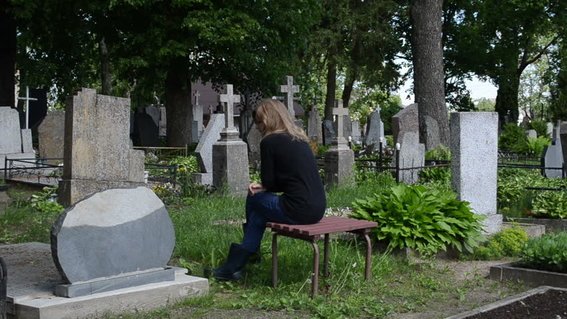
The woman returned to her homeland to try to get the insurance company her husband had life insurance to compensate her. The insurance company argued that in Belgium such a bridal contract had no official validity for her or for her child. After an arduous struggle, the courts gave reason to the widow and the insurance company had to compensate her with 100% of the stipulated figure.
One of the most outrageous cases about this law was that of a young American, who made a formal request in 2004 to marry the French poet Conde de Lautréamont, who died in 1870 under strange circumstances just at the age of 24. The French law rejected the young woman's request when she considered that she did not comply with all the requirements for a post-mortem union: Obviously there was no sentimental link between the two parties, much less a common consensus to marry. Lautréamont is the author of the famous surrealist work Cantos de Maldoror (Les chants de Maldoror).
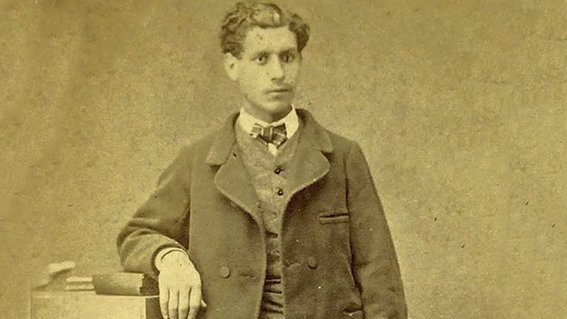
In order for a person to realize his desire to make a marriage of this nature, he must send a petition to the French president, who in turn sends it to the Minister of Justice; This in turn is obliged to consult with the Prosecutor in whose jurisdiction the surviving person lives. It is important for the parent of the deceased to agree to the request for the procedure to proceed. If the prosecutor validates that the marriage was concluded before the death of one of the two parties occurred, it gives notice to the president who signs the final decree for the marriage to take place under the protection of the law.
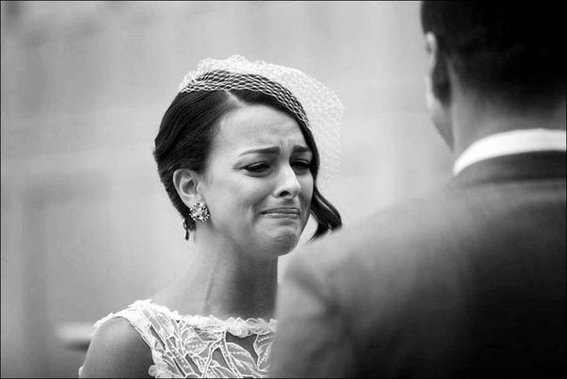
However, while in France it is possible to do so and is not seen as something sinister or absurd for some judges, in Latin countries like Paraguay post-mortem marriage is not seen as a real possibility. At the request of several people to make this option valid, Néstor Stellato Majoli, director of the Civil Registry of persons, says:
" It is absurd that we should register the marriage of a living and a dead person. How am I going to make a marriage of a deceased? It's impossible. The celebration of marriage is voluntarily among living people, not dead."
Marriage is a totally personal choice and each one has the freedom to decide with whom and at what point to take that important step, even if it is in the field of the hereafter. The rituals around death in the world are truly bizarre and post-mortem marriage is an example of that.
Also if they have some opinion or some topic that they would like that we publish write in the comments and they will be taken into consideration.
This is your space.
We wait for its support. Vote and share for more content.
This is so strange. Thanks for sharing, I learnt something new today.
Yes, the truth is a rare way of marriage but in every part of the world people apply different things at the level of culture, greetings, thanks for the comment :D